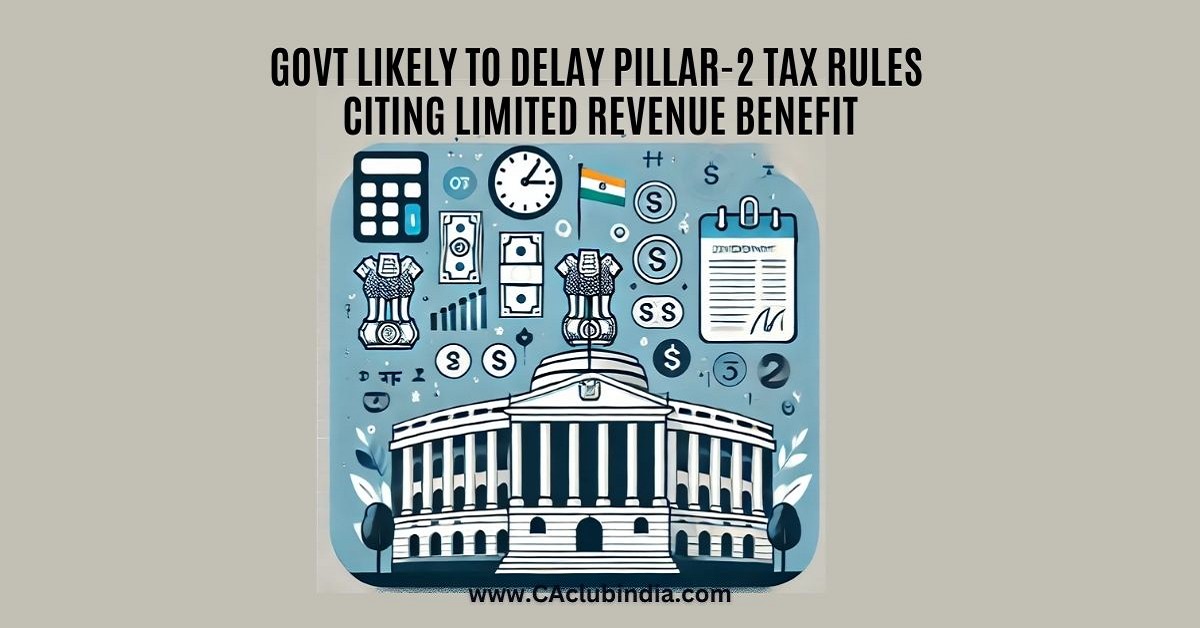India is adopting a cautious stance on implementing the OECD-led Pillar 2 tax regime, which mandates a 15% minimum corporate tax rate for multinational enterprises (MNEs) with global revenues exceeding €750 million. Though the government may soon include an enabling provision in the Income Tax Act as part of a broader legislative revamp, full implementation could be delayed due to minimal projected revenue gains, according to official sources.

Key Highlights
- Minimal Revenue Impact: Internal analysis suggests that adopting Pillar 2 would yield only ₹100-200 crore in additional revenue, a modest amount compared to the potential loss of sovereign taxation powers. The government remains wary of compromising its legislative autonomy for limited fiscal gains.
- Sovereignty vs. Compliance: While India is among 140 countries that have endorsed the multilateral convention, concerns persist over losing control of its tax policy. The regime introduces a "top-up tax," enabling home countries to tax MNEs that pay less than 15% in foreign jurisdictions. However, the presence of the Qualified Domestic Minimum Top-up Tax (QDMTT) in low-tax jurisdictions could limit India's ability to collect these taxes.
- Revenue Collection Complexity: Under the regime, if an MNE headquartered in India pays a 9% tax in the UAE, India could potentially impose an additional 6% top-up tax. However, if the UAE enforces QDMTT, India may lose the right to collect this additional tax, complicating revenue expectations.
- Global Alignment and Fair Taxation: Tax experts argue that while Pillar 2 might not substantially boost revenue, it aligns India's corporate tax structure with global standards and helps curb profit shifting. The measure prevents a "race to the bottom" among nations and promotes fair tax distribution for multinational firms operating across diverse regions.
- Future Legislative Path: With the Income Tax Act, 1961, under review for a comprehensive overhaul by January, India is expected to add an enabling clause for Pillar 2. However, the actual adoption of implementation rules could be deferred as the government evaluates the balance between fiscal autonomy and international tax commitments.
Conclusion
As India navigates global tax reforms, officials are mindful of preserving the country's legislative rights while keeping pace with international tax standards. While Pillar 2 adoption may eventually proceed, the government's cautious approach signals a preference for strategic sovereignty over marginal revenue gains.





 CAclubindia
CAclubindia

